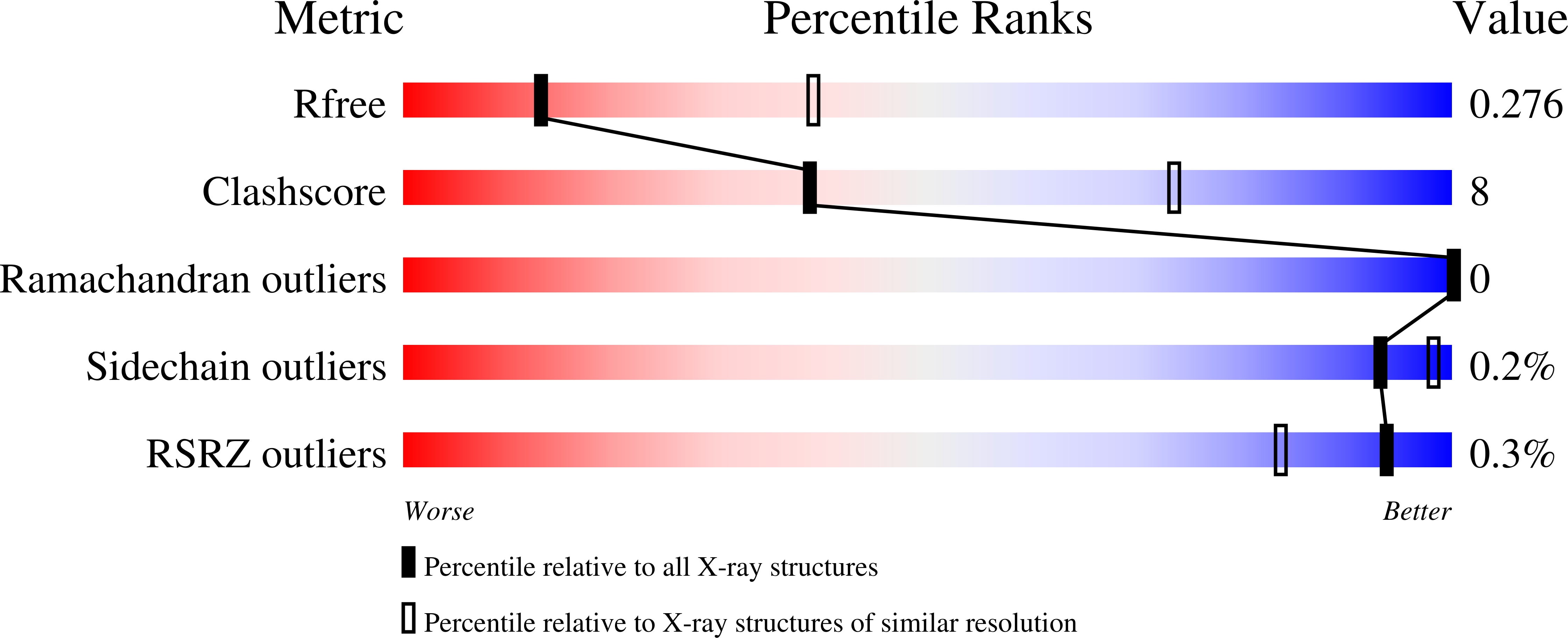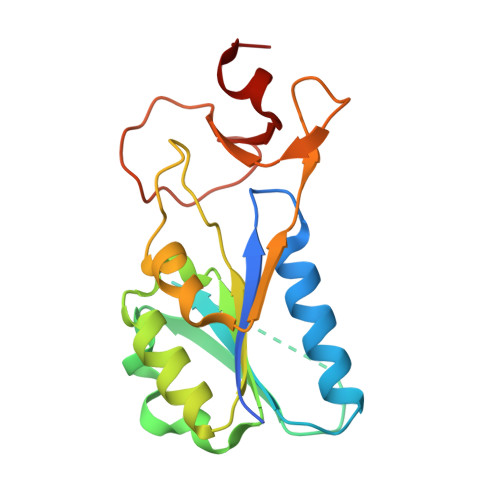Structural and Kinetic Characterization of Thymidine Kinase from Leishmania Major.
Timm, J., Bosch-Navarrete, C., Recio, E., Nettleship, J.E., Rada, H., Gonzalez-Pacanowska, D., Wilson, K.S.(2015) PLoS Negl Trop Dis 9: 3781
- PubMed: 25978379
- DOI: https://doi.org/10.1371/journal.pntd.0003781
- Primary Citation of Related Structures:
4UXH, 4UXI, 4UXJ - PubMed Abstract:
Leishmania spp. is a protozoan parasite and the causative agent of leishmaniasis. Thymidine kinase (TK) catalyses the transfer of the ¦Ă-phosphate of ATP to 2'-deoxythymidine (dThd) forming thymidine monophosphate (dTMP). L. major Type II TK (LmTK) has been previously shown to be important for infectivity of the parasite and therefore has potential as a drug target for anti-leishmanial therapy. In this study, we determined the enzymatic properties and the 3D structures of holo forms of the enzyme. LmTK efficiently phosphorylates dThd and dUrd and has high structural homology to TKs from other species. However, it significantly differs in its kinetic properties from Trypanosoma brucei TK since purines are not substrates of the enzyme and dNTPs such as dUTP inhibit LmTK. The enzyme had Km and kcat values for dThd of 1.1 ¦̀M and 2.62 s(-1) and exhibits cooperative binding for ATP. Additionally, we show that the anti-retroviral prodrug zidovudine (3-azido-3-deoxythymidine, AZT) and 5'-modified dUrd can be readily phosphorylated by LmTK. The production of recombinant enzyme at a level suitable for structural studies was achieved by the construction of C-terminal truncated versions of the enzyme and the use of a baculoviral expression system. The structures of the catalytic core of LmTK in complex with dThd, the negative feedback regulator dTTP and the bi-substrate analogue AP5dT, were determined to 2.74, 3.00 and 2.40 ?, respectively, and provide the structural basis for exclusion of purines and dNTP inhibition. The results will aid the process of rational drug design with LmTK as a potential target for anti-leishmanial drugs.
Organizational Affiliation:
Structural Biology Laboratory, Department of Chemistry, University of York, York, United Kingdom.

















